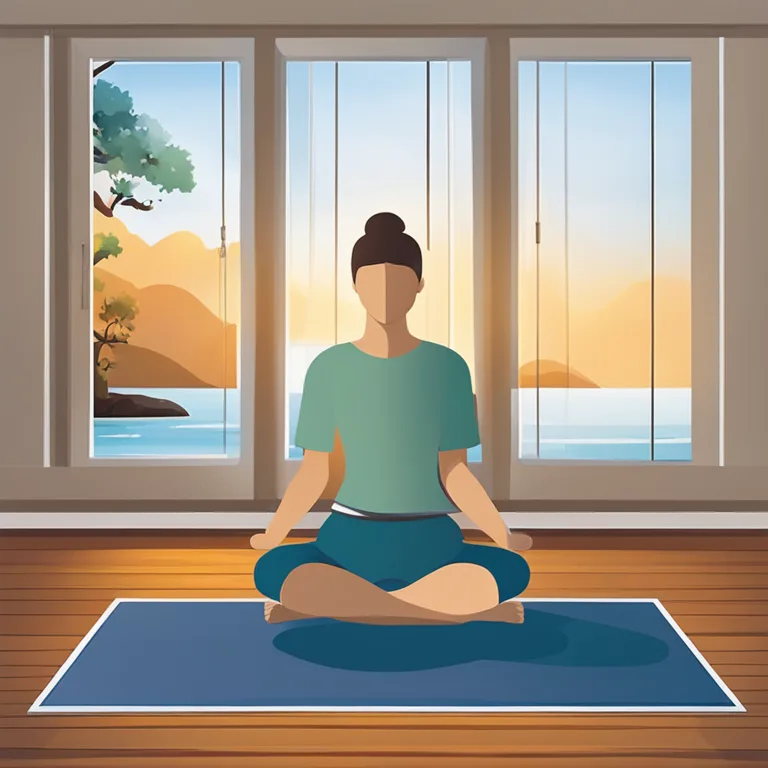
Beginner's Guide to Meditation
Discover simple and effective meditation techniques designed for beginners to foster mindfulness and reduce stress.
article by Hina Kurosawa
Meditation, once considered an esoteric practice, has become widely recognized for its myriad of mental health benefits. As modern life becomes more hectic, an increasing number of people are turning to this ancient practice to find tranquility and improve their well-being. In this article, we offer practical meditation tips for those at the start of their mindfulness journey, ensuring an approachable and rewarding experience.

Before diving into meditation, it's important to cultivate an environment conducive to relaxation and focus. Find a quiet spot where interruptions are unlikely. You might like to dim the lighting, burn some incense or play soft, ambient music. The goal is to create a sanctuary where external stimuli do not distract from the meditation experience. Comfort is key; make sure you have a cushion or chair that supports a straight but relaxed posture.

Your posture can have a significant impact on the quality of your meditation. Aim to sit with a straight back, either cross-legged or in a chair with your feet flat on the floor. Your head should be level, and your hands can rest on your knees or lap. The position should feel natural and supportive but not so comfortable that you're at risk of falling asleep.

To start, set a modest time goal—five to ten minutes will suffice. Use a timer with a gentle alarm to avoid clock-watching. Close your eyes or lower your gaze to lessen visual distractions. Begin to notice your breath without trying to alter it. Inhale and exhale naturally, observing the rhythm and sensation of the air moving through your nostrils, filling your lungs, and leaving your body.

One of the biggest challenges beginners face is maintaining focus. It's natural for thoughts to arise, but instead of engaging with them, simply acknowledge their presence and return your attention to your breath. Some find it helpful to silently repeat a mantra or focus on a particular sensation in the body. The key is gentle redirection; with patience and practice, your concentration will sharpen.
It's inevitable that distractions, both internal and external, will occur. When you notice your mind has wandered, guide it back to your point of focus without self-criticism. For external noises that interrupt, mentally note them and incorporate them into your practice rather than resisting them. Overtime, you'll learn to maintain your meditative state amidst the usual chaos of daily life.
Consistent practice is essential for reaping the benefits of meditation. Aim to meditate daily, even if just for a few minutes at a time. This regular commitment will help embed mindfulness into your routine and make meditation a natural part of your everyday life. You may choose to gradually increase the duration of each session as your ability to focus improves.
While breath observation is a common starting point, don't be hesitant to explore other meditation techniques. Guided meditations, loving-kindness meditation (Metta), or body scan practices are all beneficial. As technology advances, numerous apps and virtual platforms now offer a wealth of resources tailored for meditation novices.
Embrace meditation as a journey rather than a destination. The practice isn't about achieving perfection but rather about cultivating a deeper awareness of the present moment and a gentler relationship with oneself. Over time, meditation can offer profound insights into your mind and emotions, ultimately contributing to a more centered and peaceful life.
Published: 12/20/2023
Modified: 12/20/2023
More predictions
Come back here soon to learn more about yourself and your future


Meditation: Unveiling The Optimal Practice Duration
Discover how much time to dedicate to mindfulness meditation for personal growth and well-being.


Advanced Techniques For Deepening Meditation
Discover the serene path to mindfulness meditation with this simple, step-by-step guide focused on fostering tranquility and self-awareness in your daily life.


Building A Daily Meditation Habit
Embrace serenity and enhance well-being with simple, everyday mindfulness meditation exercises.